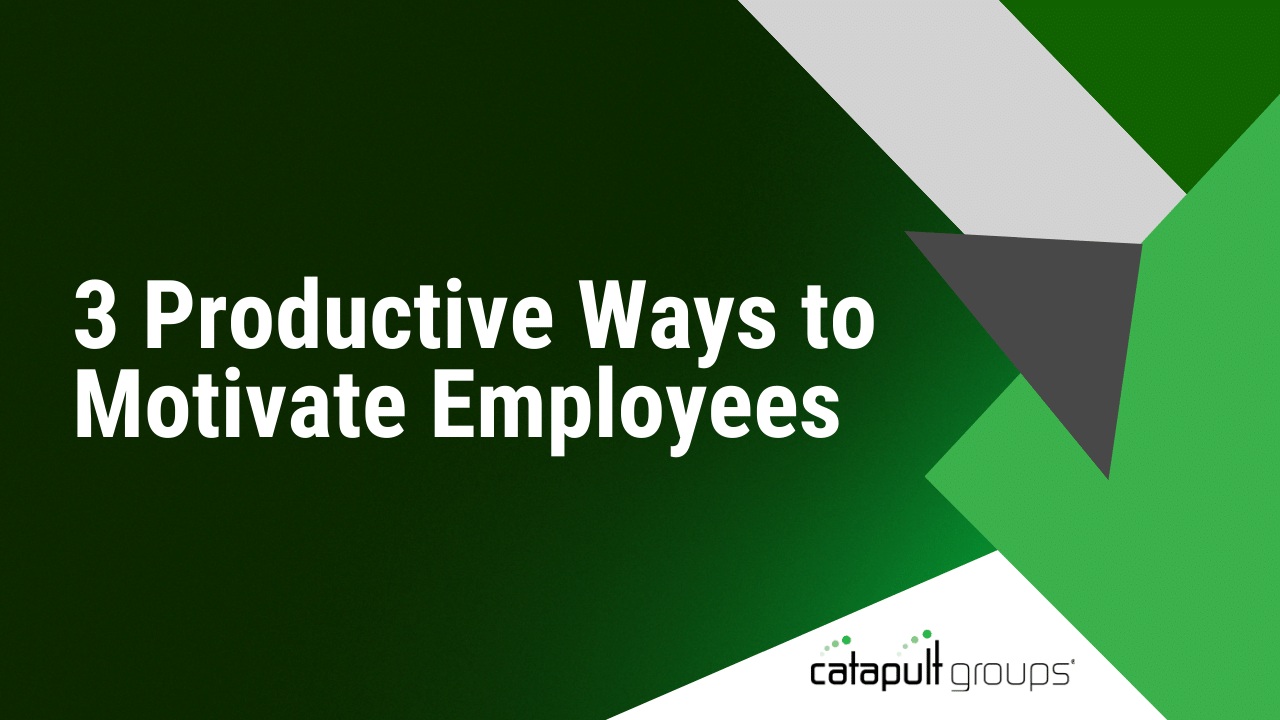Leadership Tips for a More Engaged Workforce
For every business, there’s a lot riding on employees being fully engaged in what they do. A lack of engagement can result in productivity deficits, a breakdown in morale, and higher-than-normal employee turnover. Such conditions are untenable for any business in the long run.
Conversely, there’s really no limit to what can happen when employees feel they’re an integral part of the organization and that their contributions genuinely matter. Engagement, says business management expert Matthew Wride, “is an emotional state where we feel passionate, energetic, and committed to our work.” Under these circumstances, he adds, “we fully invest our best selves—our hearts, spirits, minds, and hands—in the work we do” and “magic happens.”
In some organizations, the CEO or business owner has so many duties and obligations to fulfill that he or she either overlooks the employment engagement factor or relegates it to his team in Human Resources. But as with virtually all aspects of leadership, getting employees to be a key part of the operational process is another CEO responsibility.
Leadership Tips for a More Engaged Workforce and High Morale Workplace
An isolated or detached chief executive rarely leads a highly engaged company culture. Rather, it’s those leaders who place a high priority on the mental and emotional wellbeing of their workforce that foster significant growth in their business.
Members of Catapult Groups and their business coaches often share insights into this area. Here’s a look at what they’ve learned—and what other experts have to say—regarding leadership for a more engaged workforce:
1. Get to know the people who work for you.
Depending on the size of the organization, taking time to better know and understand your team is a highly effective strategy for engagement. Keeping in mind that employees are—or should be—among your key constituencies, look into holding regular get-together sessions. Leadership expert Marcel Schwantes suggests these CEO-initiated options:
- Invite several employees to a private lunch with the leader and/or other senior executives.
- Host an open forum with a set number of “first-come, first-served” invitations.
- Lead a quarterly company-wide employee meeting.
The goal, he says, is “increasing transparency across reporting levels, improving morale through share decision making” and freeing up “lines of communication across all channels.”
2. Share a compelling vision of the future.
Disengagement starts when an employee feels “doomed” to do the same thing, day in and day out, with no sense of where these activities lead. A leader intent on employee engagement consistently shares a vision of where the organization is headed, in terms of profit, growth, stronger workforce, etc. And they’re not shy about repeating that vision in all the venues possible. The key is framing that vision in a succinct and compelling fashion, not as a dry litany of operational statistics or percentages of growth.
3. Clearly communicate what’s in it for them.
A key element of any strategic vision is outlining both the specific contributions made by employees and how the company’s growth will be of benefit to them. When you articulate your strategic vision, says the Khorus Blog, “think about how you can connect it with the personal goals of your team.” Challenge yourself to communicate “what’s in it for your employees if the company’s vision is realized.”
4. Offer employees the chance to make key suggestions.
Your talented workforce isn’t there just to perform a prescribed set of daily functions. Many of them might have insights into how to improve operations, customer service, etc. Regardless of the type of business, “it’s the people holding the shovel, working the end of the assembly line or inputting data at a keyboard” who often possess “splendid ideas on how to do things better,” including “better processes, better outcomes and better ways to cut costs for both customers and companies.”
5. Recognize and reward.
It’s not a mystery. Employees who are recognized for their hard work and dedication to the company’s mission should have their efforts publicly recognized and rewarded. The good news is, there’s no one way that this “R&R” must take place. A lot depends on a company’s individual culture. Some businesses regularly select and honor an employee of the month, others officially mark the successful achievements of a project team, and still others liberally reward their top performers with meaningful perks.
Money is an ever-popular type of reward, but employees often respond favorably to having days off or adopting a temporary flexible work schedule. A formal employee recognition program sends the message that excellence in the workplace will be continuously acknowledged and rewarded. Just as importantly, maintaining a public venue—a wall of plaques, for example, with the names and photos of previously honored employees—helps keep this aspect of culture fresh in the minds of your team.
6. Work should be fun.
It’s become imperative to create an environment in which people feel stimulated and driven to greater productivity. That will never happen in an atmosphere stripped of inspiration and creativity.
As we have noted elsewhere, “Work needs to be fun. People like to work in great teams that are doing great work, where … the sum of the parts is greater than the individual,” and employees enjoy “the opportunity to do something truly special.” That’s how employee engagement blossoms.
7. Learn more from your peers.
If finding the most effective strategy for employee still feels elusive, it’s always helpful to consult your peers among area CEOs and business leaders. Many of these hard-working men and women have confronted the challenge of employee engagement and devised unique tactics to address it. Being part of a small business advisory group can lead you to unexpected insights and solutions, which in turn promote greater engagement and retention among your valued workforce.
If you’ve experienced situations where a different leadership style might make a genuine impact for the better, take a look at what Catapult Groups has to offer—in monthly meetings of small business advisory groups, in one-on-one business coaching and in our expert business growth workshops.



